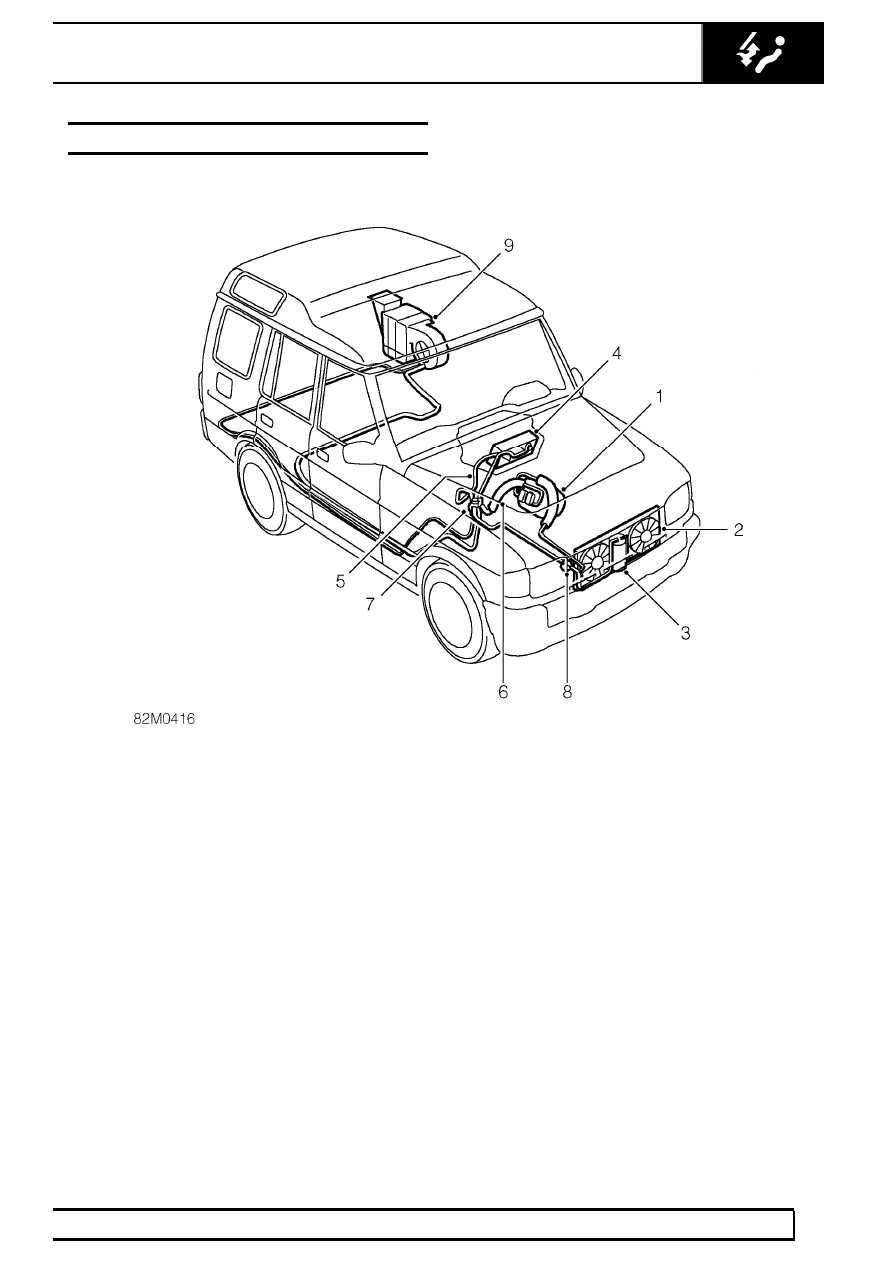Land Rover Discovery. Manual - part 188

AIR CONDITIONING
1
DESCRIPTION AND OPERATION
AIR CONDITIONING SYSTEM COMPONENTS
1. Compressor
2. Condenser
3. Receiver/drier
4. Evaporator
5. High pressure servicing connection
6. Low pressure servicing connection
7. Dual pressure switch
8. Sight glass
9. Rear evaporator/blower motor assembly